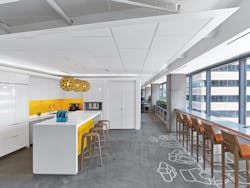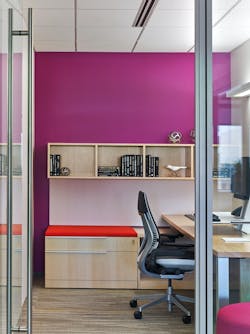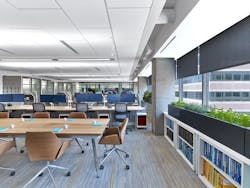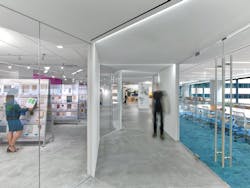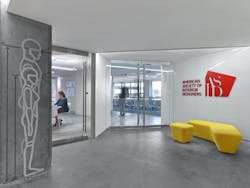3 Core Concepts to Know When Specifying for the New Workplace
The world has experienced widespread disruption over the past year as a result of the COVID-19 pandemic. Our day-to-day lives have transformed dramatically, with the way we work being a major subject of change. While working from home has provided us with a new outlook on the benefits like reduced commute times and flexible schedules, it has also amplified the significance of the interactions and cultural developments that occur in the office.
Worldwide, employees have adapted to remote work. Prior to the pandemic, only about 20% of employees that were able to perform their work from home chose to do so. By October 2020, more than 70% were working from home, either by choice or necessity.
The impacts from the pandemic have pushed design to transform as changes occur in how people work, how places can exceed expectations and how the design industry can deliver optimal solutions. This is where the value and necessity of commercial interior design services come into play. Offices will not be going away—they will evolve.
Three core concepts should be considered for the new and evolved workplace:
- Health and Safety as Fundamental Values: People have become more mindful of their surroundings and its impact on their health and safety. Those seeking to reassure occupants of the health and safety of the space will want to communicate these concepts through visible and invisible features in the built environment (ASID 2021 Outlook and State of Interior Design Report, p. 36, 37, 40, 41)
- Environmental, Social and Corporate Governance: Companies are rethinking their operations and their environmental impact. Those seeking to be more environmentally conscious will want their business space to reflect that in the choice of furnishings, finishes and materials. (ASID 2021 Outlook and State of Interior Design Report, p. 42)
- Localism and Community: Local connection is taking on a greater importance in our daily lives. People are taking greater interest in where they live and its local offerings. Those seeking to participate more in their local communities will want to tap into the local culture and support local businesses. (ASID 2021 Outlook and State of Interior Design Report, p. 36)
In response to these trends that have accelerated during the pandemic, interior designers can employ their expertise in human centric design, enhancing various features in the office in support of occupant well-being and satisfaction. The following elements should be considered in creating future “pandemic-proof” workplaces and specifying for them, utilizing the strengths of the collective industry:
Reimagining the Workplace
Transforming the workplace goes beyond what the eye can see. Designers should rethink the future of people and places, and increase the amount of flexible and multi-purpose furnishings to appeal to all that may enter the space.
Speaking with Manufacturers
Product performance and quality are areas that require particular attention within the workplace. Designers should discuss design requirements with manufacturers to specify according to the needs of their clients and users. Material transparency, life cycle assessment and maintenance are additional topics to pursue.
Understanding and Working Within Lead Times
Delayed product deliveries and projects have been problematic for many companies; difficulty accessing subcontractors and supply-chain disruptions are also common challenges. Designers should develop relationships with reps to gain detailed expectations on lead times.
[Related: How to Specify for the Public Sector]
Designers will also need to be flexible in their choice of products and materials, and may want to explore drawing on more local providers of goods and services. Investigate local options to reduce risks and constraints.
Utilizing Products That Consider Planet Health
Products that have sustainable characteristics have been sought in practice to promote planetary health. Designers should make note of what products are made of, where they are sourced from, how they are transported, how they are used and how they are disposed to increase sustainability efforts.
Employing Products That Positively Impact Health and Wellness
In fostering workplace wellness, designers may create an experience that helps reduce stress, manage surroundings and improve emotional well-being. Designers should consider strategies for enhancing and communicating indoor environmental quality (e.g., air filters, CO2 monitors) and features incorporating biophilic design to increase health and wellness in “pandemic proof” spaces.
Don’t fret—there’s plenty more where that came from! An advocate for the profession and those who proudly take up space, the American Society of Interior Designers (ASID) has created a number of materials to assist interior designers throughout the product specification process. Practitioners may view any of the ASID Health and Wellness Protocol webinars (Protocols 1, Protocols 2, Protocols 3, Protocols 4, Protocols 5). Additional educational materials encompass the “Chemistry in Material Selection & Specification: Key Considerations” brief and “Healthy Materials Sourcing and Selection” and “Why Standards Matter” webinars.
